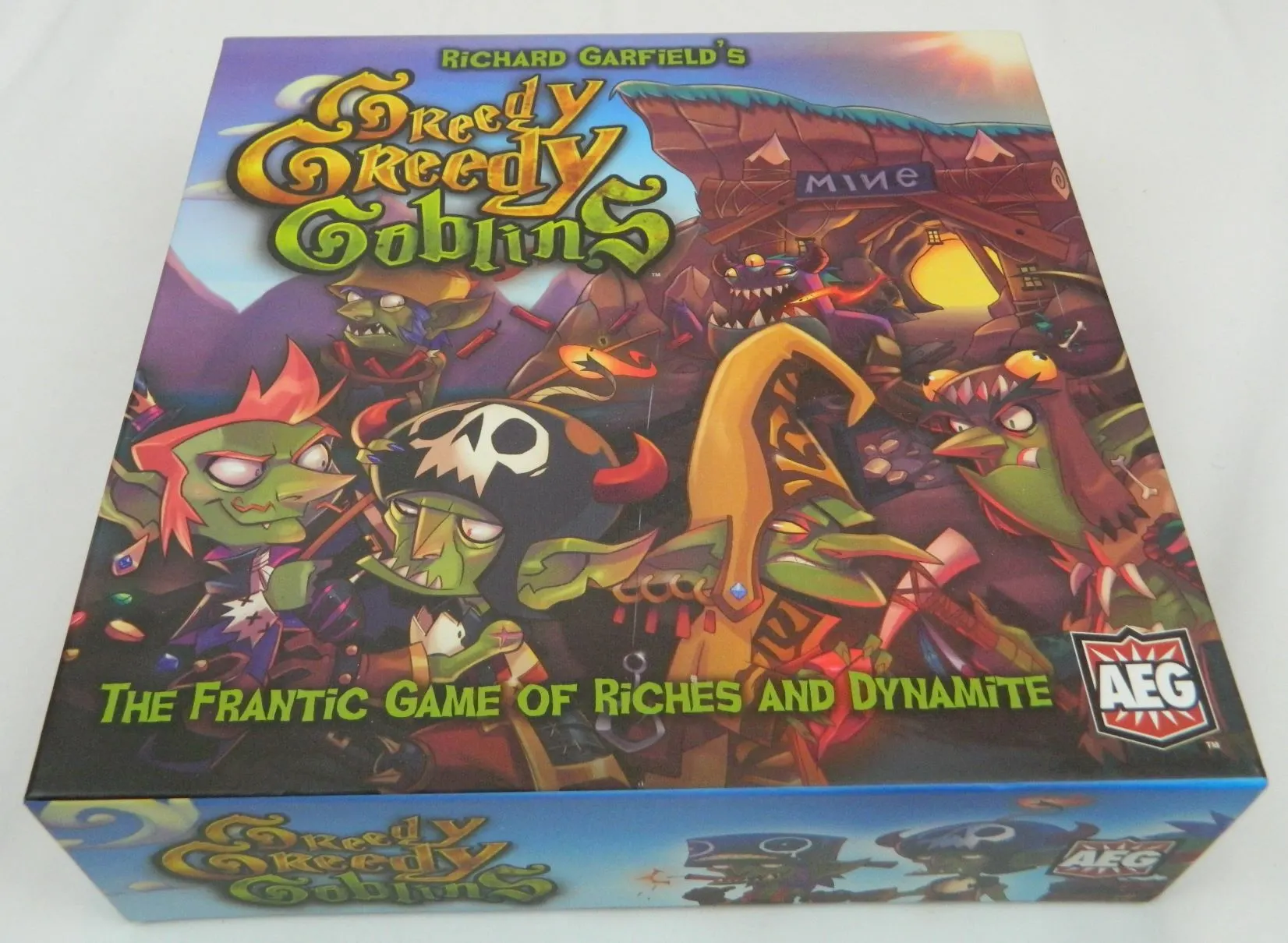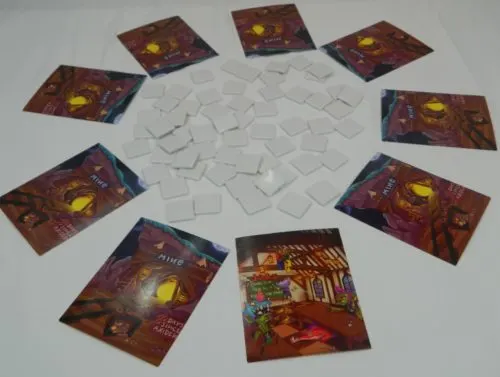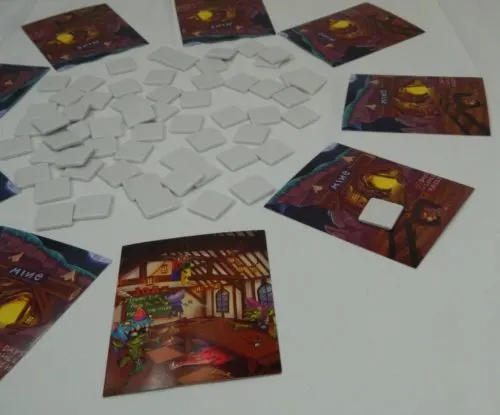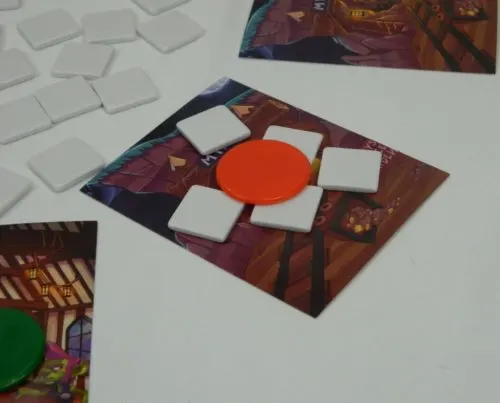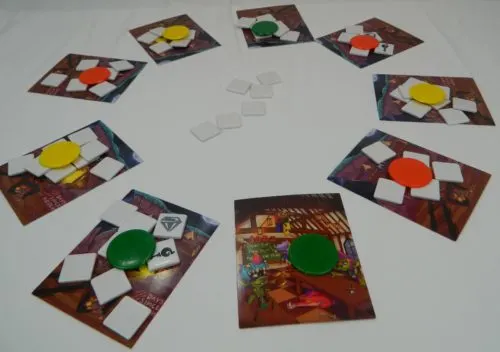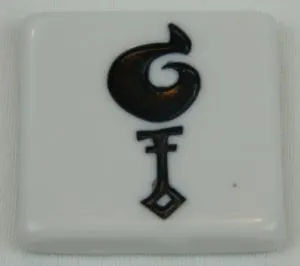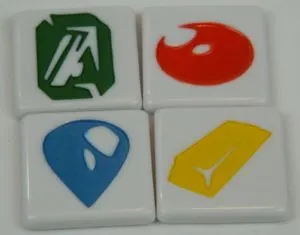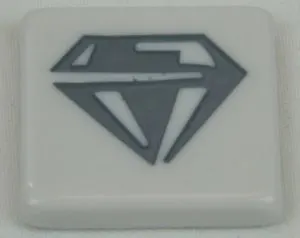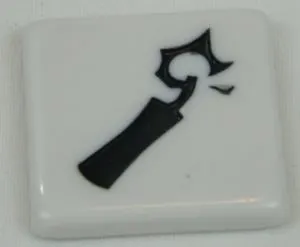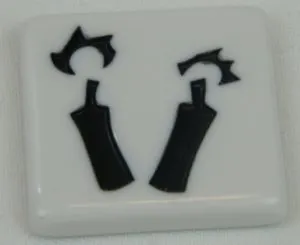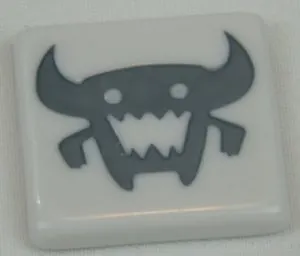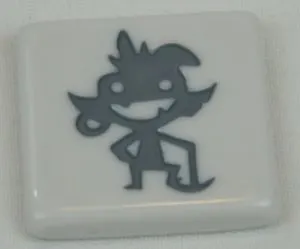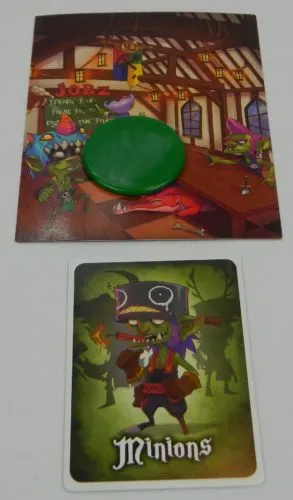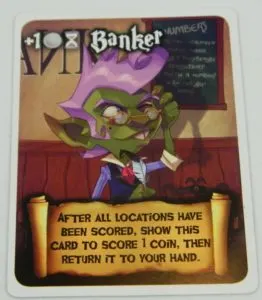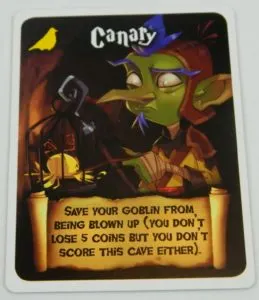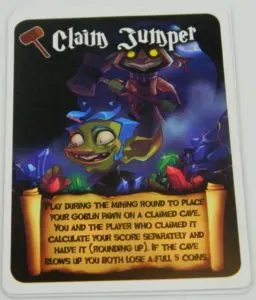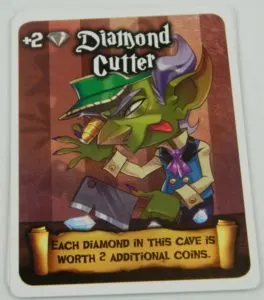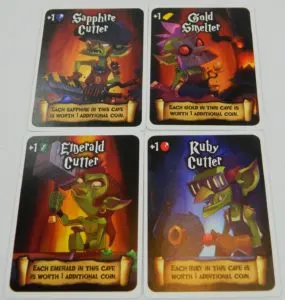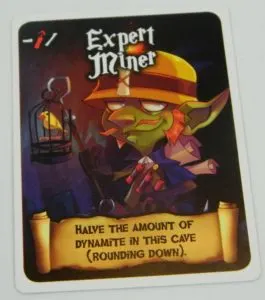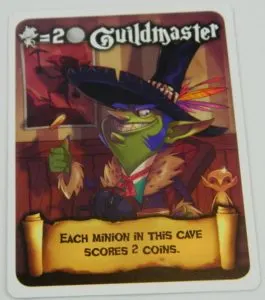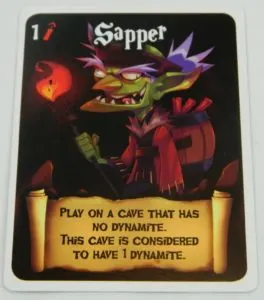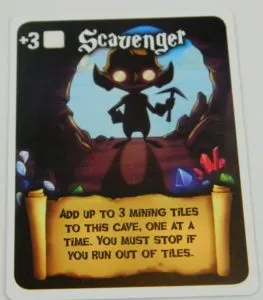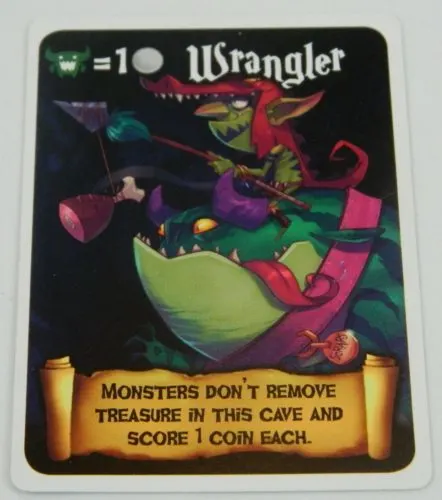Richard Garfield is probably one of the most well known board game designers. He is most known for Magic the Gathering, but he also created other popular games such as King of Tokyo, Netrunner, and Roborally. While I haven’t played a lot of games designed by him, I am always interested in checking them out as he has made a lot of good games over the years and they are generally more accessible where the whole family can enjoy them. Created back in 2016 today’s game Greedy Greedy Goblins is a game that kind of flew under the radar as while people generally enjoyed it, it never became as popular as some of Richard Garfield’s other games. The premise behind the game intrigued me though as it looked like it combined speed elements with a press your luck game. Greedy Greedy Goblins may not be the deepest game, but it succeeds at creating a quick speed press your luck game that the whole family can enjoy.
How to Play Greedy Greedy Goblins
Setup
- Each player chooses a clan. They will take the corresponding clan sheet and three pawns. In four player games you will only use two of the goblin pawns. Any clan sheets and pawns not used are returned to the box.
- Place the caves and the guildhall in the middle of the table in a circle formation. The number of caves that you will use depends on the number of players:
- Two players – five caves
- Three or four players – 8 caves
- Shuffle all of the minion cards and place them in a face down pile next to the play area.
- Shuffle all of the mining tiles (with the symbols face down) and place them inside the circle formed by the caves and guildhall.
Playing the Game
Greedy Greedy Goblins is played over a number of rounds. The game is played simultaneously which means that all of players play at the same time as there are no turns.
Players will take one of the face down tiles at a time from the pile in the center of the cards. Players can only use one hand while drawing tiles. They will look at it (without letting the other players see it).
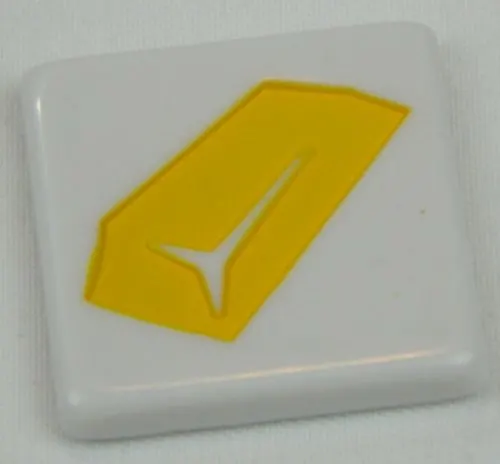
This player picked up a gold tile. They will choose which mine that they would like to place it face down on.
They will then choose one of the caves (not guildhall) that they will place it face down on. After placing the tile you will draw another face down tile from the center of the cards. Some rules regarding drawing and playing tiles are as follows:
- You have to look at a tile before placing it.
- All tiles that are drawn need to be placed on a cave.
- Once a tile is placed it can’t be looked at by any players (outside of torches) and it can’t be moved.
- There is no limit to the number of tiles that can be placed on a cave.
- Tiles cannot be placed on the guildhall.
At any time one of the players can choose to use one of their pawns. They can place it on the guildhall or one of the caves. A player can only play their pawn onto a card that no one else has placed their pawn on. Once a pawn has been placed on a cave or the guildhall, no one can place any more tiles or pawns on that card. Once a pawn is placed it cannot be removed or moved for the rest of the round.
Once a player has placed their last pawn, they can no longer grab or place any more tiles.
The last player with a pawn(s) remaining can draw and place up to five more tiles.
If a player doesn’t want to place one or more of their pawns, they don’t have to. Once all players have placed all of their pawns or have chosen not to play their remaining pawns, the round will end and the game will move to scoring.
Tiles
Torch
When a player draws a torch they may place it face up on a cave. They will then have the opportunity to flip one of the other tiles in the cave face up. A player can choose to place the tile face down though and forgo the special ability.
Treasure
Treasure tiles come in four colors/shapes. The treasures are emeralds/green, rubies/red, sapphires/blue, and gold/yellow. Treasures are usually only worth one coin. Each clan has a favored treasure though (matching their color). Favored treasures are worth two coins to the associated clan.
Diamond
Diamonds are worth two coins each. Diamonds are also considered treasure.
Dynamite
Dynamite carries with it a risk/reward mechanic. A cave that features only one piece of dynamite in it will double the amount of points scored from treasure in the cave. If a cave has two dynamite in it, all of the treasure tiles will score triple their normal amount.
If three or more dynamite are in a cave though, the cave will blow up. The player will score no points from the cave and won’t get any of the other benefits. The player will also lose five coins.
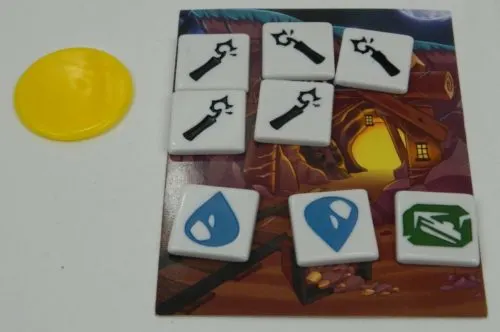
There were five dynamites in this cave. The cave will blow up and the yellow player won’t receive any coins from it. They will also lose five coins because the cave blew up.
Double Dynamite
Double dynamite is the same as normal dynamite, but it counts as two when determining the amount of dynamite in a cave.
Monster
Each monster in a cave will eat one treasure tile (diamonds included). The player who claimed the cave will get to choose which treasure the monster eats.
Minion
For each minion in a cave (that didn’t blow up) the player will get to draw one minion card.
End of Round
Players can score the locations in any order that they prefer. If order is important to the players, the player with the most coins currently will score all of their locations first. When scoring a player’s cards they can score them in any order. Coins/points are scored as follows:
The player who placed a pawn on the guildhall will take the top minion card from the draw pile. This is all you get for claiming the guildhall.
Each of the individual caves will score points based on what tiles were placed on them (see Tiles section for details on scoring).
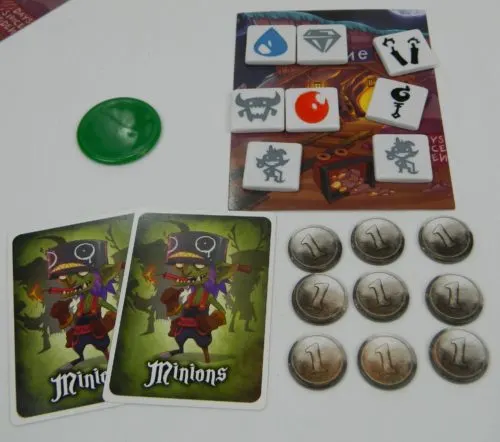
The green player claimed this cave. The sapphire will earn one coin. The diamond will earn two coins. The ruby will be eaten by the monster. As there are two dynamites in the cave the players normal number of coins (three) is tripled to nine. There were also two minion tiles in the cave so the player will draw two minion cards.
After scoring if no player has 100 or more coins (60 for three player games), another round will be played.
Any player with four or more minion cards in their hand must discard cards until they only have three cards remaining in their hand. Players get to choose which cards to discard.
All pawns are returned to the corresponding player.
All tiles are returned face down to the center of the cards. All of the tiles are shuffled to mix them up.
Winning the Game
If a player has earned more than 100 coins (60 for four player games), the game ends. The player with the most coins wins the game.
If there is a tie, play another round to break the tie.
Minion Cards
Players will acquire minion cards throughout the game through claiming the guildhall or having minion tiles in the caves that they claim. Players will keep minion cards hidden from the other players until they are played. If the draw deck ever runs out of cards, the discard pile will be reshuffled to form the new draw deck.
Except for the Banker and Claim Jumper, all minion cards are played onto a cave by the player who claimed it after all of the tiles have been revealed. After the cave is scored and its effect has been applied, the minion card is discarded. A minion card earned from scoring a cave can’t be used on the same cave, but can be used on a cave scored later in the same round.
Banker
This card will be played after all of the caves and guildhall are scored. A player can play the Banker card and earn one coin. Unlike other minion cards the Banker is returned to your hand after you play it. Thus you can play it every round that you hold it in your hand.
Canary
When a cave blows up a player can play a Canary card in order to avoid losing five coins. The player won’t receive any of the benefits from the cave though.
Claim Jumper
The Claim Jumper is the only card played during the round. When a player sees a cave that they would like that another player has already claimed, they can play the Claim Jumper and add their pawn to the cave as well. The card cannot be played to claim the guildhall.
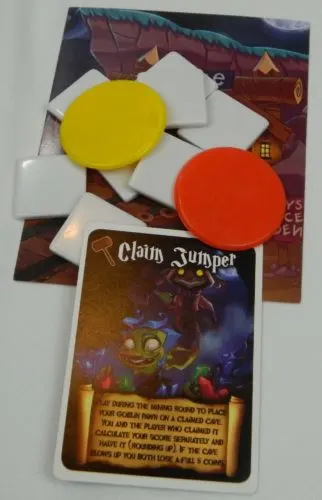
The yellow player originally claimed this location. The red player played the Claim Jumper card in order to also add their token to the location.
During scoring each of the players on the cave will calculate their scores separately. They will receive half of the coins (rounded up) that they would have normally received.
If there are monsters in the cave, the player who originally claimed the cave decides which treasures are removed.
If there are minion tiles, both players draw one card for each minion tile.
When minion cards are played the following cards will affect both players:
- Expert Miner
- Sapper
- Scavenger
The following cards only affect the player who played the card:
- Canary
- Gem cutters
- Gold Smelter
- Guildmaster
- Wrangler – The player who played the card gets the coins. The monster won’t take treasure from either player though.
Diamond Cutter
All diamonds in the cave are worth two additional coins. The dynamite multiplier is applied after the bonuses are totaled.
Emerald/Gold/Ruby/Sapphire Cutter
Each treasure of the corresponding type are worth one more coin. You can play multiple of the same card on the same cave.
If the treasure matches your clan’s favored treasure, the additional coin is added to the extra coin you normally would receive. The dynamite multiplier is applied after the bonuses are totaled.
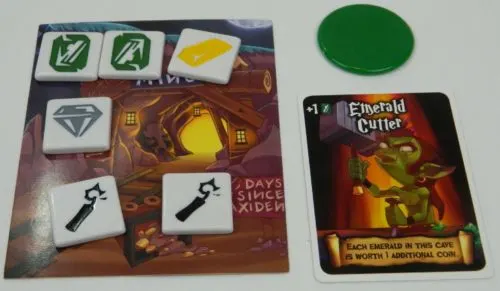
The green player played the Emerald Cutter card on this location. This player will score three coins for each emerald tile. They will score one coin just for the tile, one because the tiles match their color (green), and one additional coin due to the Emerald Cutter. These coins would also be tripled due to the two dynamite tiles.
Expert Miner
When the Expert Miner card is played, the amount of dynamite in the cave is halved (rounded down). You may play multiple Expert Miner cards on the same cave. You will handle one card at a time.
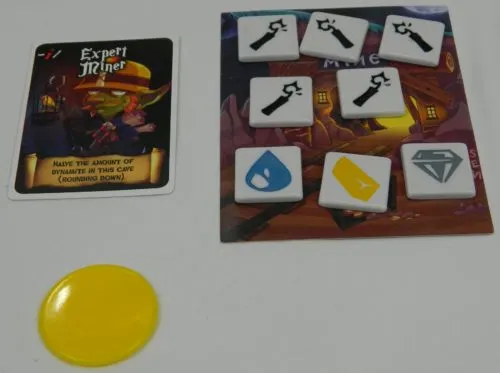
Normally this mine would blow up as there are five dynamites on it. The Expert Miner card that was played though would reduce the number of dynamite to two.
If the Scavenger card is used to add more tiles to a cave, the Expert Miner card applies to the total dynamite after all of the tiles are added.
Guildmaster
The player will receive two coins for each minion tile in the cave in addition to drawing a minion card. Note: The instructions say one coin in one area and two cions in another. As the card also says two coins, I believe this is a misprint in the instructions.
The bonus provided by the Guildmaster is not affected by the dynamite multiplier. If the cave blows up, the effect of the Guildmaster is lost.
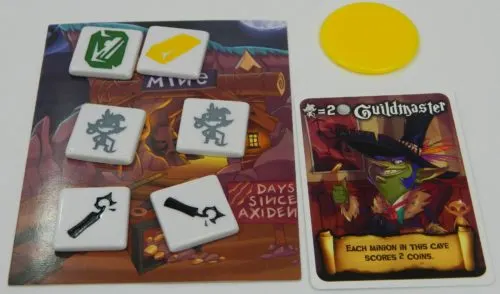
The yellow player played the Guildmaster card on this location. As the location had two Minion tiles on it, the player will receive four coins from those tiles.
Sapper
If a cave has no dynamite in it, playing a Sapper card adds one dynamite to the cave.
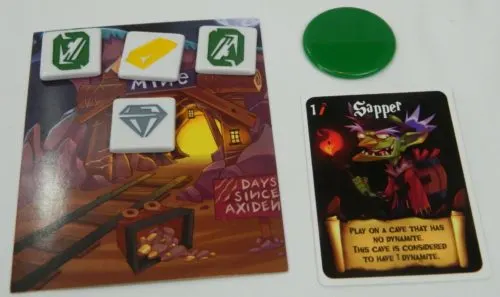
As there was no dynamite on this cave, the green player played the Sapper card in order to add a dynamite doubling the coins earned from the mine.
If a player also uses a Scavenger to draw more tiles and adds dynamite with these new tiles, the Sapper still adds one dynamite to the cave.
Scavenger
When a Scavenger is played the player can add up to three additional tiles to the cave. The tiles are taken from the center pile of tiles that weren’t drawn. If there are not enough tiles remaining, you will lose the effect.
Players can stop adding tiles at any point. Any tile they draw though has to be added to the cave.
Multiple Scavenger tiles can be played on the same cave.
Wrangler
A Wrangler card will stop monsters from removing treasure from a cave. Each monster will also score one coin.
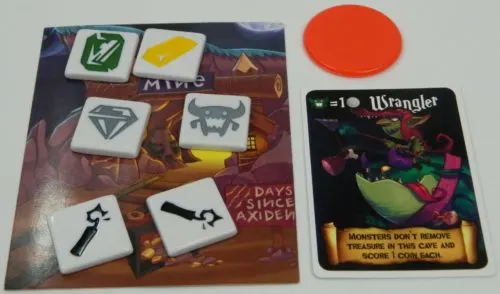
The red player played the Wrangler card to this cave. The card will neutralize the Monster tile that otherwise would have ate one of the treasures. The monster will also earn one coin for the player.
When a player adds tiles to a cave with the Scavenger, the Wrangler applies to any monsters that are drawn.
The coins earned from monsters are not affected by the dynamite multiplier.
If the cave blows up, you receive no benefit from the Wrangler.
My Thoughts on Greedy Greedy Goblins
I have played a lot of different board games, and yet I can’t remember playing one quite like Greedy Greedy Goblins before. It really doesn’t fit nicely into a traditional board game genre. I would say that the best comparison I could make would be that it feels like a press your luck game was combined with speed/real-time mechanics. I found this to be pretty interesting as press your luck games are usually known for giving players time to decide whether they would like to proceed of if they would rather stop. This is not the case in Greedy Greedy Goblins as you have to choose how much risk you want to take on the fly.
Basically the gameplay consists of all of the players grabbing tiles from the middle of the table at the same time. You look at the tiles and then decide which cave to put them on. Some of these tiles are worth points or give you other benefits, while other tiles will hurt you. When a player wants to claim a cave they will place one of their pawns on it. The longer you wait to place your pawn the more points you can earn from a cave, but another player can swoop in and claim it before you. Before claiming a cave you also need to consider what tiles you and other players have placed on the cave. There could be a lot of good tiles on it, or there could be a lot of tiles that will just hurt you.
This is where a lot of the gameplay from Greedy Greedy Goblins comes from. There is a memory mechanic of sorts as you need to try to remember what tiles you placed on each cave. Most of the gameplay is built around deciding how much of a risk that you want to take though. Do you want to take a cave with only a few tiles on it? The cave is unlikely to explode so you won’t lose points. The number of points you end up scoring though is likely pretty low. Then there are the caves that have a bunch of tiles. The cave could be filled with tiles that will earn you a lot of coins, but they could also be filled with a lot of negative tiles that will lose you points. Your success in the game will largely come down to how well you guess and how quickly you make a decision.
On the surface Greedy Greedy Goblins seems like a really basic/simple game. In a way it is. The rules can be learned within just a couple of minutes. The players might not have ever played a similar game before, but none of the mechanics are particularly hard to understand. Probably the element that adds the most complexity to the game is the minion cards as you may occasionally have to refer back to the rules to remember what each card does. Most of the cards can be played after the round is over though so it is not much of a problem to refer back to the rules. The game has a recommended age of 14+ which I personally don’t understand. I see no reason why someone as young as ten or so couldn’t play the game.
Heading into playing the game, my biggest concern was that I was worried that there wouldn’t be much strategy to the game. I thought players would just throw all of the good tiles on a cave and then claim it, while throwing all of their bad tiles on a cave they had no interest in claiming. This can happen at times in the game as in many rounds there is a cave that is literally flooded with bad tiles. That doesn’t mean that every other cave is safe though. You might be thinking that another player is stuffing a cave with treasure while in fact they are loading it up with dynamite or vice versa. The more you play the game the more a meta game starts to form as you never quite know if another player is messing with you or not.
Greedy Greedy Goblins is far from the most strategic game, but I thought it had enough to remain interesting. You will occasionally end up placing tiles frantically in order to find good tiles for yourself, but real thought needs to go into what caves you choose to take and how much risk you want to take. You can’t just sit back and think about it either, or another player will likely swoop in and steal the cave you are considering. Some players are going to be satisfied taking a cave with just a few tiles in it in order to safely score a few points. Others will be willing to take big risks in order to score lots of points. To be successful in the game you need to find the right balance as players that go too far in one direction likely won’t do too well in the game. You need to decide quickly though or you might get stuck with either having to choose one of the caves that will likely blow up or not even getting a location with one or more of your pawns.
I think the main reason why the game succeeds is due to the dynamite. The dynamite does a really good job adding a risk/reward element to the game. The first two dynamite that you add to a cave are really helpful as it either doubles or triples the amount of points that you will score from it. You can’t ignore placing dynamite in the caves that you take or you won’t score many points. You really want to avoid that third dynamite though as it loses you all of your points from the cave along with a five point penalty. The fact that you want some, but not too much dynamite adds a really interesting tradeoff to the game. You would like to place dynamite in a cave that you plan on taking from the very beginning in order to increase your points. Another player may sneak another dynamite into the cave though making it blow up.
Adding to this are the minion cards that you will acquire throughout the game. The minion cards actually play a pretty big role in the game as you can acquire them pretty easily. I will admit that not all of the cards are created equally. Some are considerably better than others as they either increase the amount of coins you earn or reduce your risk significantly. I do wish the cards were a little more balanced. I also think the game should have increased the number of cards that you can hold at the beginning of each round to either four or five cards. There were rounds where players acquired so many cards that they ended up having to discard several cards or had to play them right away for little benefit.
Despite the issues with the cards, I liked the addition to the game. The cards give players more options which are almost always better in my opinion. The cards that you have in your hand allow you to alter how you would normally approach a round. For example if you have the Canary or Expert Miner card you may be willing to take a bigger risk than you normally would. Other cards give you alternative ways to score points which allows you to stack a cave with tiles that otherwise wouldn’t score you many coins. The cards take a while to get used to, but I thought they were a good addition to the game.
As for Greedy Greedy Goblins length, it will somewhat depend. Initially the game might seem like it will end really quickly. Rounds generally take a couple of minutes at max. You will probably have to play quite a few rounds before the game ends though. This is mostly due to the fact that you likely won’t score a lot of points in any given round. It might just be because my group is generally pretty risk adverse, but there were plenty of rounds where players scored less than ten points. There are occasionally some rounds where you can score a lot of points though. Ultimately I would guess that the game will take most players around 30 minutes.
I enjoyed Greedy Greedy Goblins as I think it is a fun little game that the whole family can enjoy. I will admit that the game is not particularly deep though. If you are looking for a highly strategic game, Greedy Greedy Goblins is not going to be it. The game relies on a lot of luck. The game relies on pressing your luck, but outside of being able to read other player’s minds a lot ends up coming down to guessing correctly. There are some caves that are far riskier than others, but you never know for sure what will be in any cave outside of the tiles that you placed. Thus you have to kind of get lucky that when you take risks they pay off. The luck applies to the cards as well as some are considerably better than others.
Finally I wanted to quickly talk about the game’s components. For the most part I liked them. I really liked the game’s artwork as it really works well with the rest of the theme. The cards and coins are pretty thick where they should last. In particular I really liked the tiles which are made of plastic/bakelite. The tiles are well built and have a weight to them which is really nice. I had two main problems with the components. First I wish the pawns were more then just a large plastic disk. Otherwise I really can’t understand why the game couldn’t have come with coins with the value of five. You will deal in increments of five a lot in the game and it is a hassle dealing with just one and ten coins.
Should You Buy Greedy Greedy Goblins?
Greedy Greedy Goblins is quite a bit different than most of the games made by Richard Garfield. Basically it plays like a speed/real-time game mixed with a press your luck game. Players need to quickly look through tiles filling up caves and choosing which they would like to keep for themselves. Rounds are quick and frantic like most speed games that I enjoy. The press your luck mechanics are pretty interesting as well as there are benefits to taking risks, but you don’t want to take too big of a risk. Instead of taking your time and choosing whether you want to take a risk, you need to choose quickly and hope you chose correctly. Greedy Greedy Goblins does rely on quite a bit of luck, and not all of the cards are balanced. I had quite a bit of fun playing Greedy Greedy Goblins though.
If you have never really liked speed games or aren’t interested by the game’s premise, it likely won’t be for you. Those who like speed and press your luck games or are intrigued by the premise, should really consider picking up Greedy Greedy Goblins as you likely will have quite a bit of fun with it.
Buy Greedy Greedy Goblins online: Amazon, eBay
. Any purchases made through these links (including other products) help keep Geeky Hobbies running. Thank you for your support.

